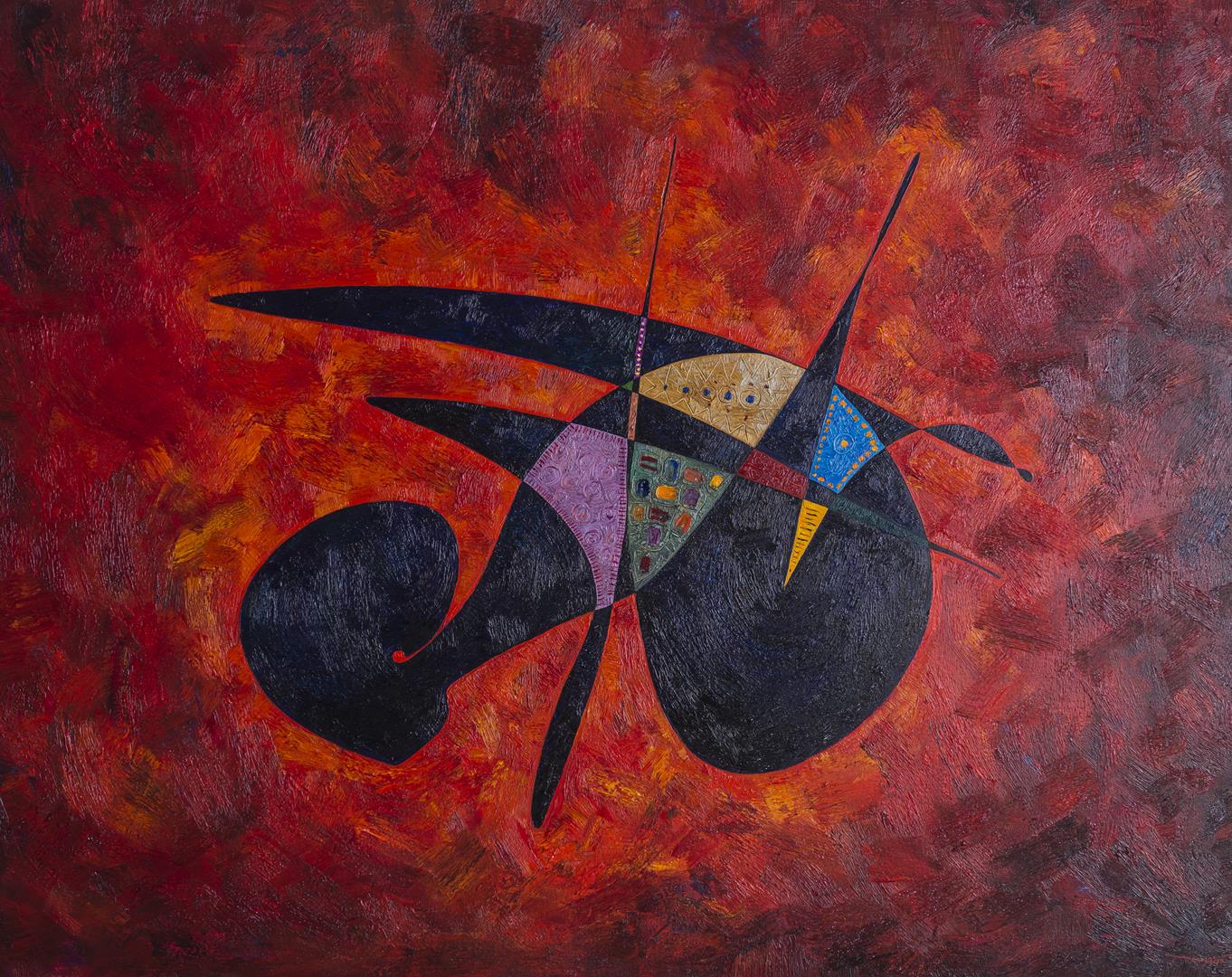- Sacred Art & Experience of Spiritual Paintings
- Spiritual Pictures of Prophet Muhammad Daughter Fatimah

- 19 June '19


by Alexandra Osadkova
19 June '19Sacred Art & Experience of Spiritual Paintings
What is Religious Art?
There are many ways of defining religious art. We can say it is:
(1) Any artwork that has a Christian or Biblical theme (Christian art); or (2) Any artwork which illustrates the worship of any god, or deity; or (3) Any artwork with an Islamic, Buddhist, Hindu, Sikh, Juche Judaic, Bahai, or Jainist theme, or any art depicting themes of the Shinto, Cao Dai or traditional Chinese religions.
However, on further analysis, these definitions relate to religious "content", rather than religious "quality". For example, a painting of a crucifixion scene which drew attention to some fundamentally weird or blasphemous physical attribute of the dying Christ would hardly merit the description of religious art. Furthermore, certain religions (Eastern Orthodox, Islam) have certain rules circumscribing the type of art permitted: a sculpture of Muhammad would be regarded as a blasphemy, rather than a piece of religious art. Thus, to qualify as "religious", the painting, sculpture or architecture concerned must have some recognizable moral narrative, that imbues the work with the necessary sacred "quality." As with the assessment of all art, determining whether or not this moral attribute is present, is essentially a subjective exercise, although in most cases the answer is likely to be fairly straightforward.
Religious Paintings
The common medium of religious art is painting and sculpture. From the Egyptian Pyramids to the Stonehenge stone circle, from the Hagia Sophia in Istanbul to the Umayyad Great Mosque of Damascus, from the Dome of the Rock in Jerusalem to French Gothic Cathedrals, from St Peter's basilica in Rome to the Taj Mahal, religious authorities have consistently turned to architecture to awe and influence their congregations. Interior and exterior artistic decorations for these Christian, Islamic and Buddhist churches typically include a wide range of decorative arts, including calligraphy, ceramics, crafts, icons, illuminated manuscripts, metalwork, mosaic, stained glass, tapestry, and wood-carving.
The function of religious art, directly or indirectly, is to win converts. Architecture is, therefore, the principal form, since a cathedral can inspire, teach and house a congregation. Public statuary can also inspire, while interior mosaics and stained glass can illustrate divine stories - not unimportant in ages where illiteracy was the norm. By expounding the message of an ordered Universe under God, Christian art also contributed to the creation and preservation of social order. But it came at a price. Thus in their attempts to revive the grandeur, beauty, and prestige of Rome with the finest architectural designs, sculpture, and frescoes, Pope Julius II (1503-13) and Pope Leo X (1513-21) nearly bankrupted the Church. In fact, Papal overspending on art was an important cause of the Reformation, as it led to higher taxes on the common people, and greater corruption among the officers of the Church. Even so, during at least the nine centuries between 800 and 1700, the Church of Rome was by far the largest patron of the arts.
Sacred Art Capture
It is well-known that Islamic religious tradition forbids the figurative depiction of human figures, so artists avoid the temptation of comparing themselves and their works to the Creator. Thus, Muslim masters were forced to develop the language of ornament - the form of proto-abstract Islamic art. At first glance, such aniconism (rejection of visual representation of deities and nature) makes talking about history or any personalities impossible.
Sacred Art Subject
This can be brightly illustrated with the oil painting, dedicated to the youngest daughter of the Prophet. Fatimah is said to be his most beloved child, who has inherited a lot of her father’s features - from gait to the manner of communication. Her prudence and modest behavior made the young girl the embodiment of the ideal Muslim woman. Not surprisingly, in Iran, Mother’s Day is celebrated on her birthday. However, behind that inspiring, idealistic image of Allah’s pious servant, one can overlook the person with tremendous inner power and courage, whose life was filled with struggle. The pass of faith can be deeply distressing. But one shouldn’t be afraid.
Spirit
Fatimah is said to put herself in danger numerous times, helping her father in the war against non-believers. Then things got even worse after the death of Muhammad: having no time for proper grief, she found herself in the center of the political turmoil and fight for the succession of the Prophet. Her spirit was restless in the final months of her life (she died soon after her father), and Virtosu wanted to depict that state, believing it is the borderline situations that unveil the true character of things.

Composition
The composition of Spiritual Paintings Series is unbalanced and harmonious at the same time. The combination of red (in the backdrop) and black (in the central figure) is aggressive and even infernal.
Spiritual experience
The subtle knot of lines reminds of the khatt el-islami - the Islamic Calligraphy Art. Calligraphy is the perfect incarnation of the Muslim worldview, meant to express focus on the transcendental side of life - the same principle Fatimah lived her life in accordance with. Gheorghe Virtosu prompts us to relate ourselves to that spiritual experience through contemplation and meditation on trauma.

